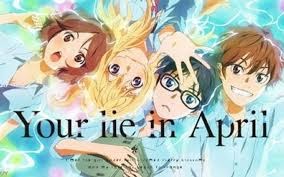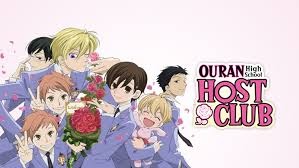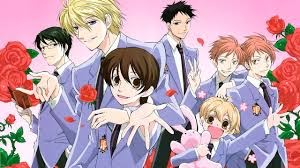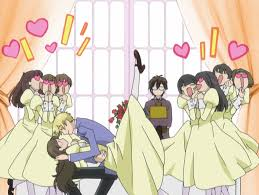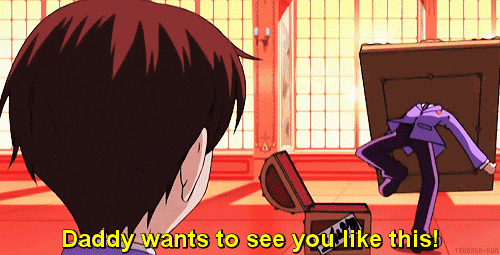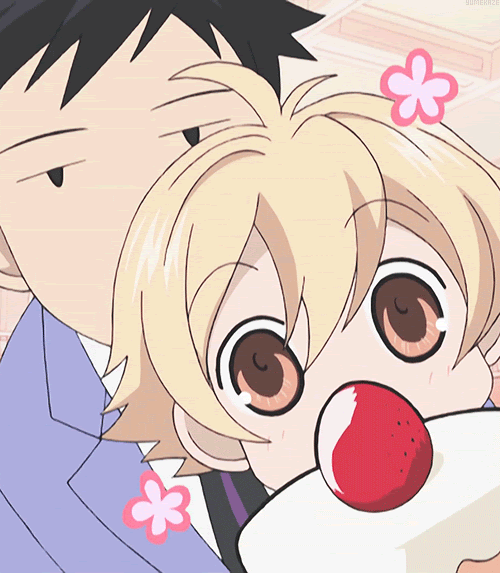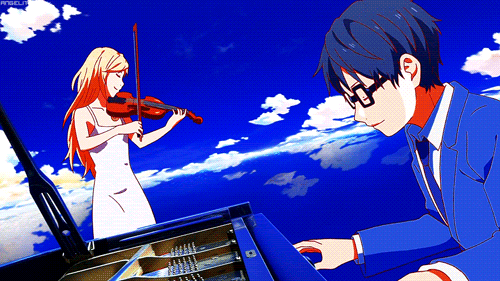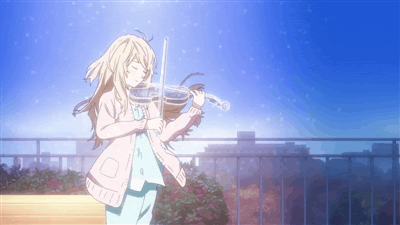The way an anime looks is something that is incredibly important to some of the people that watch it. Anime is very visually appealing no matter what show you are watching with the bright colors and big movements that catch the eye. However, the specific art style can make or break a show in a viewer’s mind. Sometimes your brain just needs time to adjust to what it thinks is visually appealing and once it does, you may just find your new favorite show. For most of my anime watching years I only watched one style (the standard style) and I refused to even consider others. Years later I decided to try a different style and now I can’t get enough. My job is to show you that you shouldn’t decide to skip out on a show solely based on the visuals. Even though the art style of the anime may look weird at first, it might end up being the greatest show you’ve ever watched.
There are a lot of different styles of anime and some of the more popular ones are used in the shows we’d usually see on TV. Each show falls into one or more categories but these categories are very broad when it comes to what show goes where. This is because some shows style fits into multiple categories. Some of the most common categories include standard, kawaii, realistic, chibi, moe, beautiful and weird. These are just a few that I found from an article titled “10 Types Of Anime Art Styles Commonly Seen In Popular Shows”. While I won’t get into all the types of styles I will be focusing more on two, beautiful and standard styles. I will be referencing the show Your Lie in April when I talk about the beautiful style and Ouran High School Host Club when referencing the standard art style.
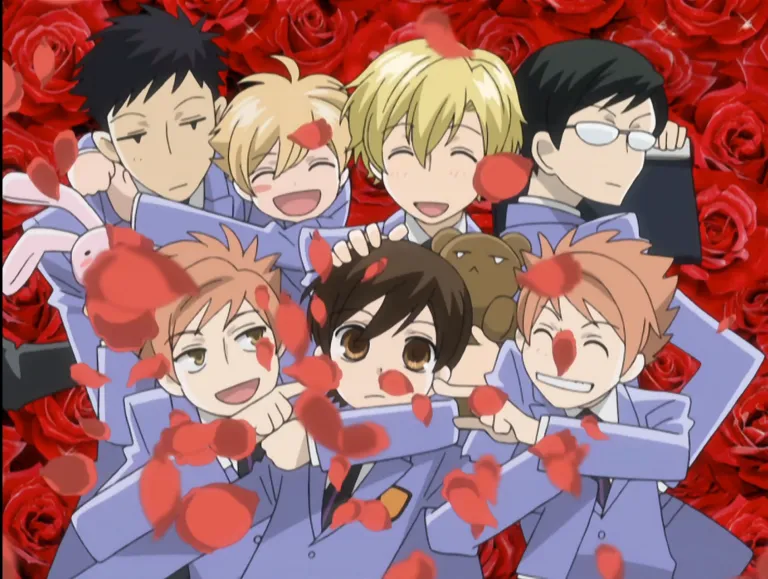
The style shown above, (taken from Ouran High School Host Club) is the most commonly seen art style in popular animes found in the U.S. According to the previously mentioned article, this show (and most other animes) fit into the standard category. While other shows in the standard category tend to sexualize their young characters, the characters in this show look somewhat childish while staying age appropriate and they aren’t sexualized in any way (even though the show is about a host club).
Each main character is wearing a uniform with lavender that contrasts the stark black of the pants and tie as shown in the picture to the left. However, the females in the show, with the exception of Haruhi (the short brown haired character on the left), typically wear pastel yellow dresses as shown in the picture to the right. The background colors typically consist of hues of pink and white with a pop of red to, in my opinion, signify love and attraction. The objects in the show tend to be bright and vibrant colors like the lime-yellow couches and the blue vase. Going back to the characters, they look like the everyday anime characters with obvious and stark lines. Each character has their own “type” or attitude and this is shown through the animation. For example, the character Honey (the gif below on the right) is shown with pink, popcorn-esque bubbles that surround him whenever he does something cute. He is made to be the cutesy character while the man behind him is supposed to be the “protector” character, shown by him staying silent and still. As for the movement of the characters, they tend to be very fast and tight which is also shown in the gif pictured below to the left.
The show is about the main character Haruhi Fujioka (the one in front with brown hair) repaying a debt to a group of boys that are in a host club after she broke their very expensive vase. They start out by making her the “errand boy” but end up allowing her to join the host club to repay her debt. Throughout the show she grows very fond of the group and becomes very close to them all. As you can see in the gifs above the colors used in the show are very cutesy and pink which adds to the theme of the show. The characters don’t necessarily look real, instead they look like the average yet cute anime character.
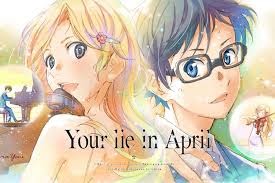
On the other side of the style spectrum, the beautiful art style is lighter and brighter with the characters looking almost realistic. If you look at the above picture, the characters look like they could be real people and there’s almost an ethereal aura surrounding them. The colors surrounding Kaori (the female) are always bright with pastel yellows and whites and on occasion pink. On the other hand, the colors that surround Kōsei (the male) tend to be blues and greys. The characters are created to be flawless and beautiful. They have pale, aesthetically pleasing and soft looking skin with realistic shadows that show their features. As shown below, their hair seems like it could be real and it flows with them as they move. Their clothes also move with them and flow perfectly. The line work is very thin and unnoticeable and the artists use objects like stars, bubbles, and rose petals to signify an airiness that radiates from Kaori. Their movements are slow and methodical while staying smooth and soft. This type of description is how most “beautiful” anime styles are represented. The beautiful style is also not seen on common streaming services like the standard style is. Because of this, people don’t tend to go out of their way to find them.
All of this adds to not only the visuals, but the tone and message of the show. The show that these pictures and gifs come from is Your Lie in April which is about a boy (Kōsei Arima) who plays piano but has become tone deaf to his own music due to his mother forcing him to continue her legacy and pushing him too hard. He is about to give up with music altogether when he meets Kaori Miyazono, a very talented and skilled violinist. Kaori pulls Kōsei out of his rut and teaches him why he started playing piano in the first place. As soon as you see them meet, you know she is going to be the one to fix his problems. You can tell that she is his warmth and she helps to balance him out.
Both of the shows are very different and yet each will keep you watching. However, if you are used to the standard style of anime (like I was) you wouldn’t give Your Lie in April a chance just based on the look. It’s style of art is not commonly seen on the streaming services many of us use daily but that doesn’t mean it’s any less good. When I first started watching anime I would strictly watch the ones that I found visually appealing so Your Lie in April wasn’t even an option. It wasn’t until my friend recommended it that I started watching. As I first watched the show, the movements of the characters looked weird to me, almost as if it was too smooth. The style the characters were drawn and animated in also threw me off as they looked a lot more realistic than I had seen before. I also wasn’t used to such light and pastel colors. Even though there were all these differences that I knew would take time getting used to, I focused on the plot and eventually forgot about those differences. I would recommend both of these shows to anyone but the first words that come out of my mouth when someone asks for a good anime is Your Lie in April.
Because I only watched the standard style of anime for years, I understand why some may want to stay where they’re comfortable. The standard style is easier to look and is more pleasing to the eye, especially if that is all you know. Not to mention that most of the anime shown on streaming services like Netflix are in the standard style. The difference in line work and the difference in the way the characters are made to look can be jarring and strange. However, like anything in life, it takes adjusting to and once you’ve adjusted you’ll be able to watch other styles with no problem.
Note on Audience: I wanted to tailor my review to those that watch anime but don’t really want to stray from the style that they watch daily. I want to show them that just because an anime looks different than what they are used to, it doesn’t mean it’ll be worse than the ones they’ve watched before. I want to show them that if they just give a show that looks different a chance, they might end up favoring it over the other style’s shows. I do, however, need help figuring out if I wrote it in a way that makes sense.
Note on Revision: After a couple times going through the review myself, I handed it over to Professor Isbell to read. I then used her comments to make a second draft of sorts and resubmitted it in Kaizena to be re-reviewed. After the second batch of comments, I fixed everything that was given to me and read through it a couple times myself. While reviewing it again, I made sure to read it aloud to myself to fix any choppiness or other mistakes I noticed.
Works Cited
Ellis, Theo J. “10 Types Of Anime Art Styles Seen In Popular Shows.” Anime Motivation,
23 Mar. 2020, animemotivation.com/anime-art-styles/.

